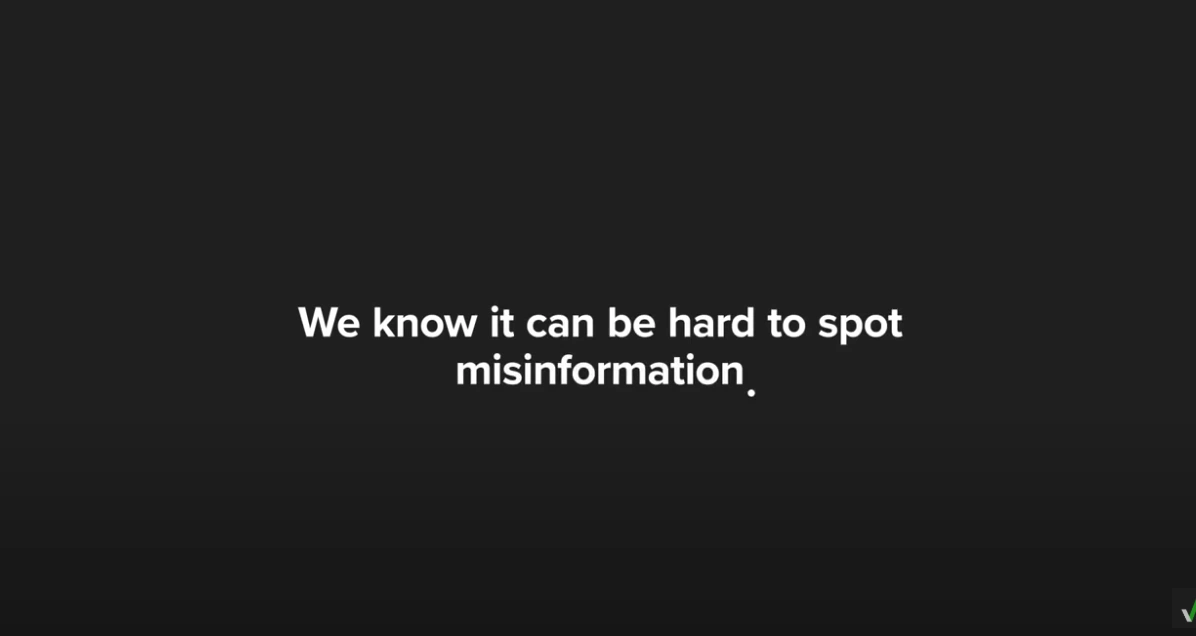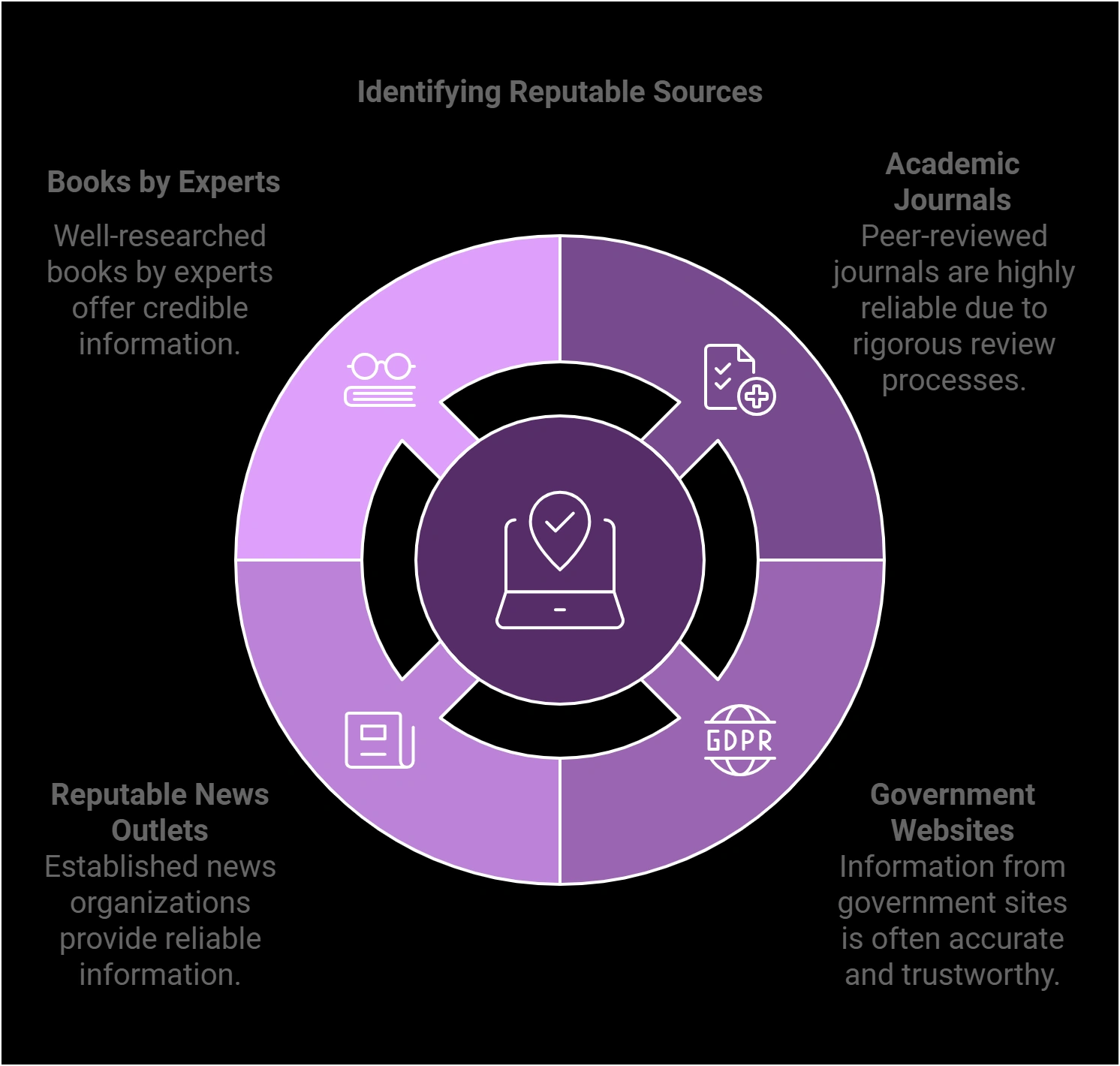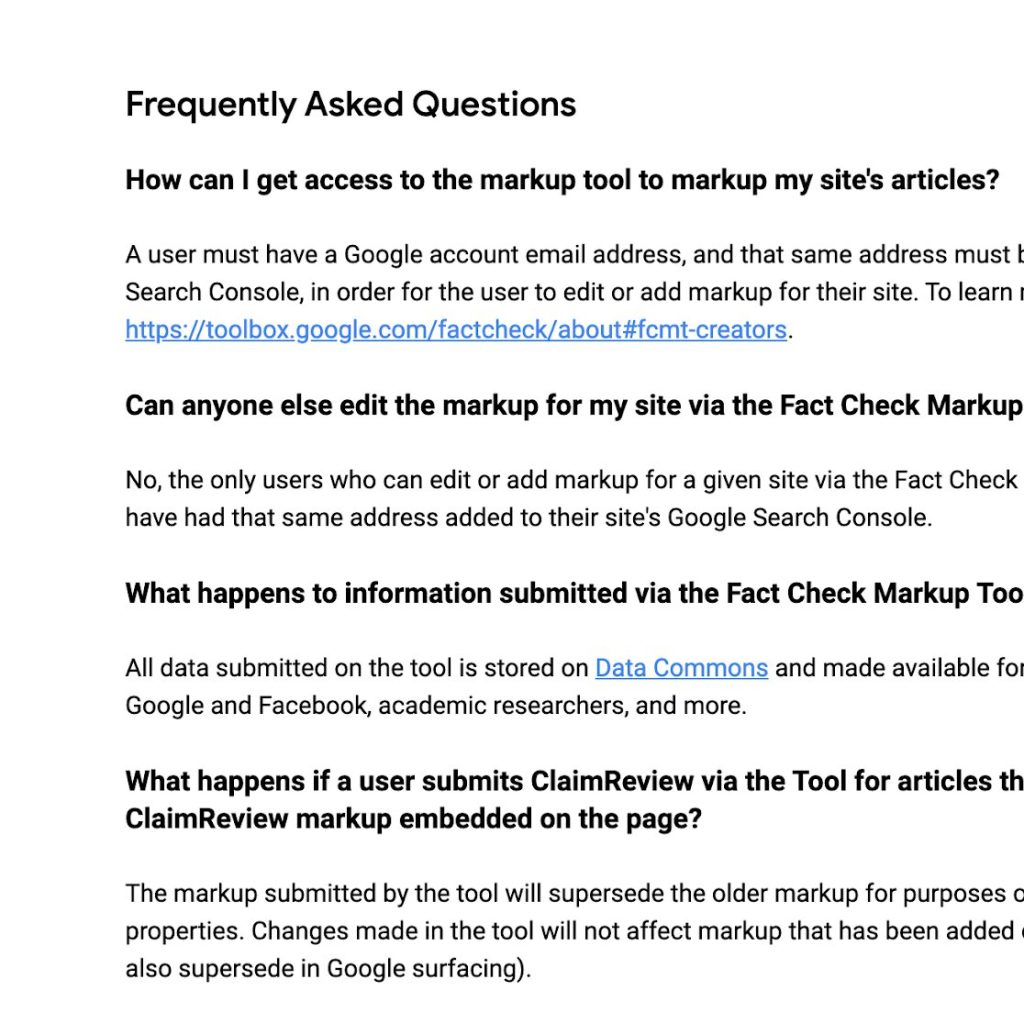Writing fact-checked articles ensures credibility and trustworthiness. It’s essential for maintaining journalistic integrity.
In today’s digital age, misinformation spreads quickly. Fact-checking helps prevent this. Fact-checked articles are vital in providing accurate and reliable information. Readers rely on trustworthy sources to form opinions and make decisions. By fact-checking, writers uphold high standards and contribute to informed public discourse.
This practice involves verifying facts, consulting reputable sources, and cross-referencing information. It might seem time-consuming, but it enhances the quality of the article. Fact-checked content not only builds trust with readers but also strengthens the writer’s reputation. In this guide, you will learn effective steps to write thoroughly fact-checked articles. This will help you produce content that is both credible and respected.

Credit: mlpp.pressbooks.pub
Importance Of Fact-checking
In the digital age, the importance of fact-checking cannot be overstated. With information easily accessible, maintaining accuracy is crucial. Fact-checking ensures that readers receive reliable and true information. It helps in building trust and credibility with your audience.
Maintaining Credibility
Credibility is the backbone of any successful publication. By rigorously fact-checking, writers can ensure their content is accurate. This helps in building a loyal readership. When readers know they can trust your information, they are more likely to return. This trust is built through consistent accuracy and reliability in your content.
Avoiding Misinformation
Misinformation can spread rapidly online. It can damage reputations and mislead readers. Fact-checking helps prevent the spread of false information. By verifying facts, you ensure your content is trustworthy. This not only protects your reputation but also serves the public good.

Here are some steps to avoid misinformation:
- Verify sources before including them in your article.
- Cross-check information with multiple reliable sources.
- Use reputable and authoritative references.
- Update information regularly to maintain accuracy.
Using these steps ensures your articles remain factual and reliable. Fact-checking is a vital part of responsible journalism.

Credit: www.youtube.com
For tips on ensuring accuracy in your content, explore this resource: How to Ensure That Information is Accurate.
Researching Reliable Sources
Writing fact-checked articles requires thorough research. Finding reliable sources is a key step in this process. Reliable sources ensure your information is accurate and trustworthy. This section will guide you on how to identify and cross-reference reputable sources.
Identifying Reputable Sources
Knowing which sources to trust is crucial. Here are some tips:

- Academic Journals: Peer-reviewed journals are highly reliable. They go through a rigorous review process.
- Government Websites: Information from government sites is often accurate. Examples include CDC and NIH.
- Reputable News Outlets: Established news organizations like BBC and The New York Times are reliable.
- Books by Experts: Books written by subject matter experts provide well-researched information.
Always check the author’s credentials. Look for experts in the field.
Cross-referencing Information
To ensure the accuracy of your article, cross-referencing is essential. Follow these steps:
- Find multiple sources that confirm the same information. This strengthens its reliability.
- Compare dates of publication. More recent sources might have updated data.
- Check citations within your sources. Reputable sources often cite other credible works.
- Use fact-checking websites. Sites like Snopes and FactCheck.org help verify information.
Cross-referencing prevents the spread of misinformation. It builds trust with your readers.
By identifying reputable sources and cross-referencing information, you can write fact-checked articles that are accurate and credible. Your readers will appreciate the effort, and you will establish yourself as a trustworthy writer.
Gathering Data
Gathering data is a crucial step in writing fact-checked articles. It ensures accuracy and credibility in your work. Accurate data supports your claims and strengthens your arguments. To gather reliable data, you need to consult various sources.
Primary Sources
Primary sources offer firsthand information. These sources include interviews, surveys, and original documents. They provide direct evidence and authentic insights. When using primary sources, verify their authenticity. Cross-check the data with other reliable sources. This ensures the accuracy of the information you present.
Secondary Sources
Secondary sources interpret and analyze primary sources. Examples include books, articles, and reports. They offer context and background information. Secondary sources help you understand the broader picture. Ensure these sources are reputable. Academic journals, credible websites, and expert analyses are good choices.
Always cross-reference secondary sources. This helps confirm the information’s accuracy. Combining primary and secondary sources strengthens your article. It provides a well-rounded perspective. This approach builds trust with your readers. They know you have done your homework.
Credit: www.researchgate.net
Verifying Facts
Writing fact-checked articles builds trust with readers. Verifying facts is a crucial step in this process. It ensures the information you provide is accurate. In this section, we will discuss different ways to verify facts. We will cover how to check statistics and validate quotes.

Checking Statistics
Statistics can be misleading if not checked. Always verify numbers from credible sources. Cross-check with multiple references. Government websites, academic journals, and reputable organizations are good places to start. Look for the latest data. Old numbers may no longer be accurate. Consistency is key. Ensure the statistics align with your article’s context.
Validating Quotes
Quotes add value to your article. They can support your points. Always ensure quotes are accurate. Check the original source. Misquoting can lead to misinformation. If possible, listen to the audio or watch the video. This helps confirm the context. Avoid second-hand sources. They can distort the original message. Proper attribution is essential. Credit the person and source.
Using Fact-checking Tools
Using Fact-Checking Tools is essential for writers. It ensures that your articles are accurate and reliable. With the internet full of misinformation, it’s crucial to verify your sources. Let’s dive into some tools that can help you fact-check your articles.
Online Databases
Online databases provide a wealth of information from trusted sources. These databases often include academic journals, government publications, and reputable news articles. Here are some top online databases to consider:
- Google Scholar: Access scholarly articles across many disciplines.
- PubMed: Find biomedical and life sciences research.
- JSTOR: Explore a digital library of academic journals, books, and primary sources.
Using these databases can help you find reliable and credible information. Make sure to check the publication date and the author’s credentials.
Verification Websites
Verification websites are dedicated to checking the accuracy of claims and news. These sites can help you identify false information and confirm facts. Some popular verification websites include:
- Snopes: A well-known site for debunking myths and rumors.
- FactCheck.org: Monitors the factual accuracy of statements made by politicians.
- PolitiFact: Rates the truthfulness of claims in American politics.
These websites use thorough research to verify information. They often provide links to original sources, which adds to their credibility.
In conclusion, using fact-checking tools like online databases and verification websites is vital. It helps you maintain accuracy and trustworthiness in your articles.
Documenting Sources
Documenting sources is a crucial step in writing fact-checked articles. It ensures your content is credible and trustworthy. Proper documentation involves citing sources correctly and being transparent about where information comes from. And Write Fact-Checked Articles, practice not only builds your authority but also helps readers verify facts.
Citation Formats
Using correct citation formats is essential for documenting sources. Different formats exist for different types of content. Here are some common formats:
- APA: Author’s Last Name, First Initial. (Year). Title of the Article. Journal Name, Volume(Issue), Page Range.
- MLA: Author’s Last Name, First Name. “Title of the Article.” Journal Name, vol. number, no. number, Year, pages.
- Chicago: Author’s Last Name, First Name. “Title of the Article.” Journal Name Volume Number, no. Issue Number (Year): Page Range.
Each format has its own rules. Choose the one that fits your publication style.
Source Transparency
Source transparency involves being clear about where your information comes from. Write Fact-Checked Articles, This builds trust with your readers. Here are some tips for maintaining source transparency:
- Include URLs: Always provide direct links to online sources. This allows readers to check the information themselves.
- Author Credentials: Mention the author’s credentials or affiliation. This adds credibility to the source.
- Publication Date: Include the date when the source was published. This ensures the information is up-to-date.
Transparency makes your article more reliable. It shows you have done thorough research.
Avoiding Common Pitfalls
Writing fact-checked articles is essential. Yet, many writers fall into common pitfalls. Write Fact-Checked Articles Avoiding these mistakes can boost your article’s credibility and readability. Write Fact-Checked Articles Below are some typical pitfalls and how to steer clear of them.
Bias And Assumptions
Avoiding bias and assumptions is crucial. Writers often bring their own beliefs into their work. This can cloud the facts and mislead readers.
Follow these steps to avoid bias:
- Use multiple sources to verify information.
- Present all sides of an issue.
- Use neutral language.
Assumptions can also mislead. Do not assume readers know background details. Always provide context and explain key points.
Outdated Information
Outdated information can harm your article’s credibility. Facts and statistics change over time. Ensure your sources are current.
Here’s how to keep your data up-to-date:
- Check the publication date of your sources.
- Use recent studies and reports.
- Regularly update older articles with new data.
Use a table to check the relevance of your sources:
| Source Type | Recommended Age |
|---|---|
| News Articles | 1 year |
| Academic Papers | 5 years |
| Government Reports | 5 years |
Stay vigilant against outdated information. Your readers rely on you for accurate and current facts.
Reviewing And Editing
Writing fact-checked articles is a meticulous task. Reviewing and editing are crucial steps. They ensure your content is accurate and credible. This section will guide you through the key aspects of reviewing and editing. It focuses on double-checking facts and the importance of peer review.
Double-checking Facts
Double-checking facts is vital to maintain accuracy. Here are some steps:
- Verify sources: Use reliable sources. Ensure they are up-to-date.
- Check consistency: Cross-check data from multiple sources.
- Use tools: Utilize fact-checking websites. Examples include Snopes and FactCheck.org.
- Document your sources: Keep a record of all references.
Ensure every fact is backed by evidence. Avoid assumptions. Readers trust well-researched content.
Peer Review
Peer review adds an extra layer of scrutiny. It involves having another person review your work. This person can provide an unbiased opinion. Peer review helps in:
- Identifying errors: Peers may catch mistakes you missed.
- Ensuring clarity: Peers can assess if your writing is clear and understandable.
- Providing feedback: Constructive criticism can improve the quality of your article.
Peer reviews are essential. They enhance the accuracy and readability of your content. Always seek feedback from knowledgeable peers.
Ethical Considerations
Writing fact-checked articles involves several ethical considerations. Adhering to these principles ensures your content is trustworthy and credible. This section will delve into key aspects like accuracy and integrity, and accountability.
Accuracy And Integrity
Accuracy is paramount in fact-checked articles. Always verify your sources. Check the information before including it in your article. Use reliable sources such as academic journals and reputable news outlets.
Integrity involves presenting information truthfully. Avoid exaggeration or misrepresentation. Stick to the facts and provide evidence for your claims. This builds trust with your readers.
Here are a few tips to maintain accuracy and integrity:
- Cross-check facts from multiple sources.
- Cite your sources properly.
- Avoid biased or sensationalist sources.
Accountability
Accountability means taking responsibility for your content. If you make a mistake, correct it promptly. This shows your commitment to providing accurate information.
Here are some ways to maintain accountability:
- Admit errors and correct them.
- Provide clear citations and references.
- Engage with readers’ feedback to improve accuracy.
Being accountable also involves transparency. Be open about your sources and methods. This helps readers understand how you gather and verify information.
In summary, ethical considerations such as accuracy, integrity, and accountability are crucial. They ensure your articles are reliable and credible.
Frequently Asked Questions
What Is Fact-checking In Article Writing?
Fact-checking is the process of verifying information for accuracy and reliability before publishing. It ensures that your content is credible and trustworthy.
Why Is Fact-checking Important?
Fact-checking maintains the integrity of your article. It prevents the spread of misinformation and builds trust with your readers.
How Do You Verify Facts In An Article?
To verify facts, cross-check information with multiple credible sources. Use primary sources, expert opinions, and reliable databases for accuracy.
What Tools Help With Fact-checking?
Tools like FactCheck. org, Snopes, and Google Scholar assist in verifying information. They provide access to accurate and reliable data.
Conclusion
Writing fact-checked articles builds trust with readers. Always verify information from reliable sources. This practice ensures accuracy and credibility. Use clear, concise language. Organize your points logically. Fact-checking prevents spreading misinformation. Double-check dates, statistics, and quotes. Your commitment to accuracy will shine through.
Readers appreciate well-researched content. They will return for more trustworthy information. Fact-checked writing enhances your reputation. Keep honing this skill. It’s worth the effort.
For more guidance on maintaining accuracy in your content, read this detailed resource: How to Ensure That Information is Accurate.


